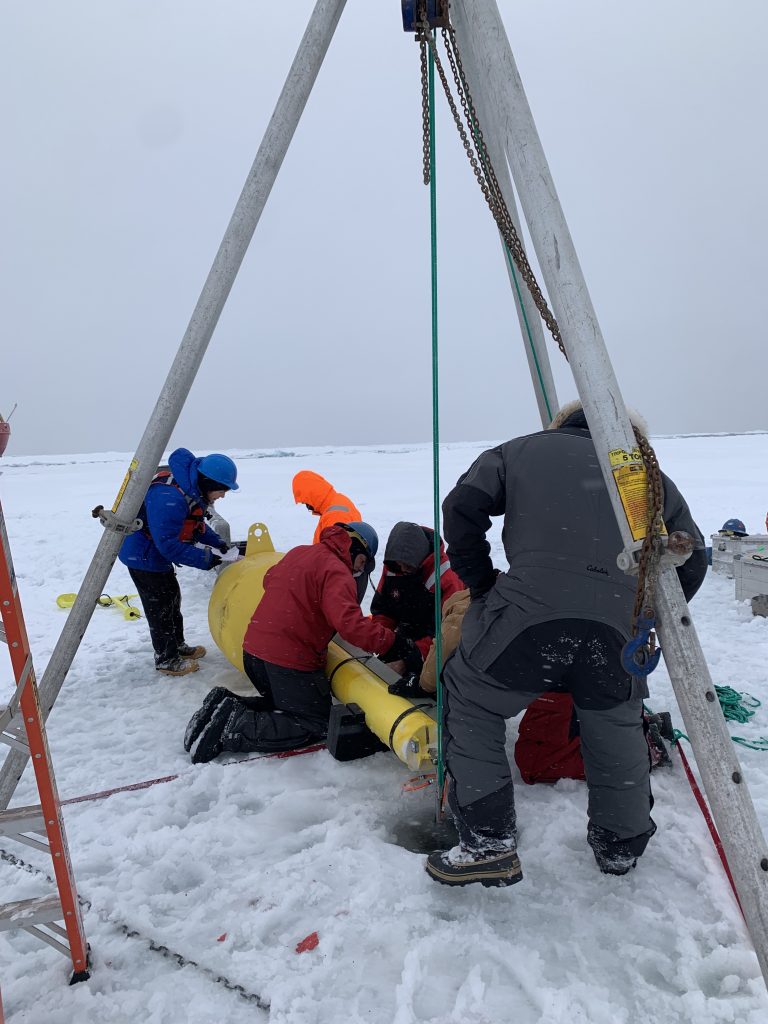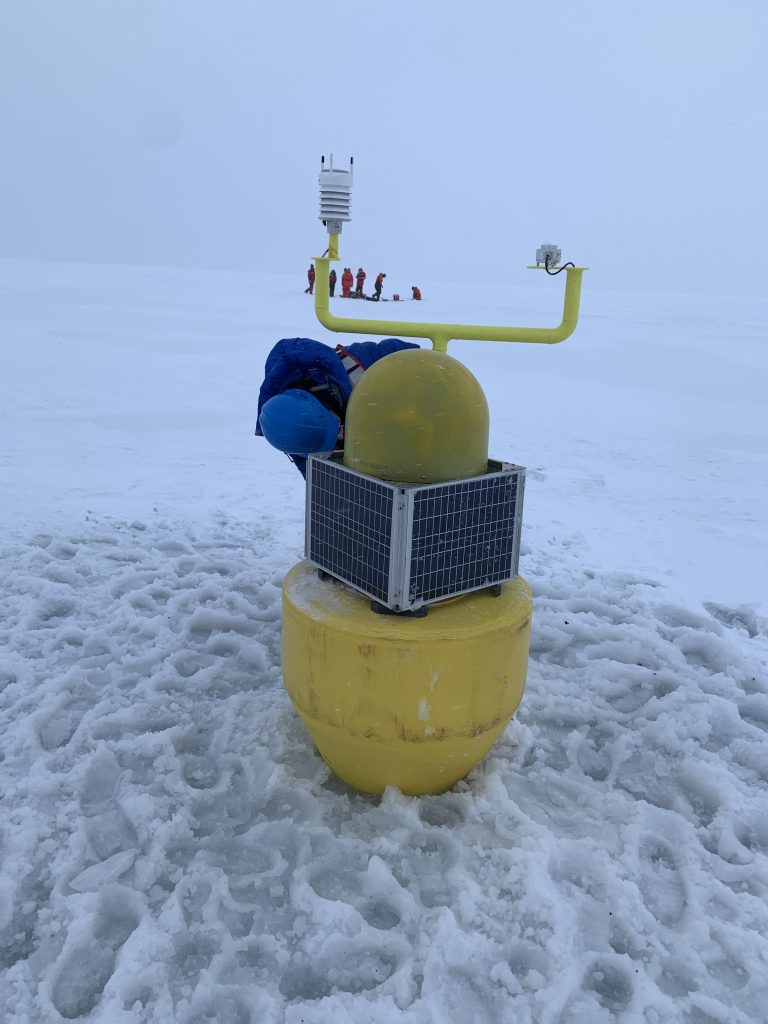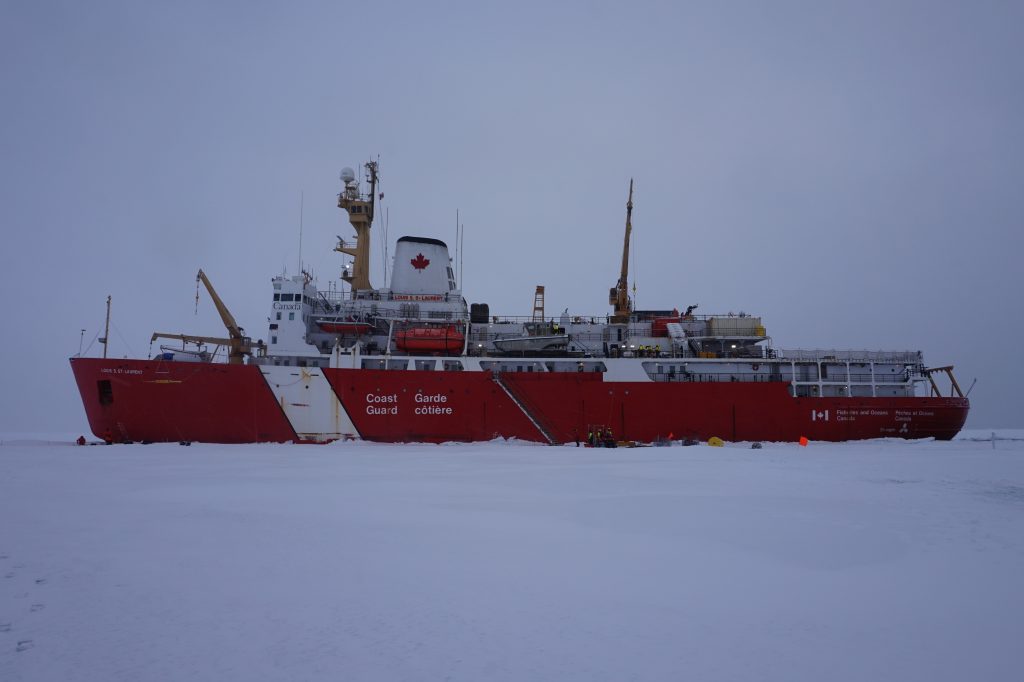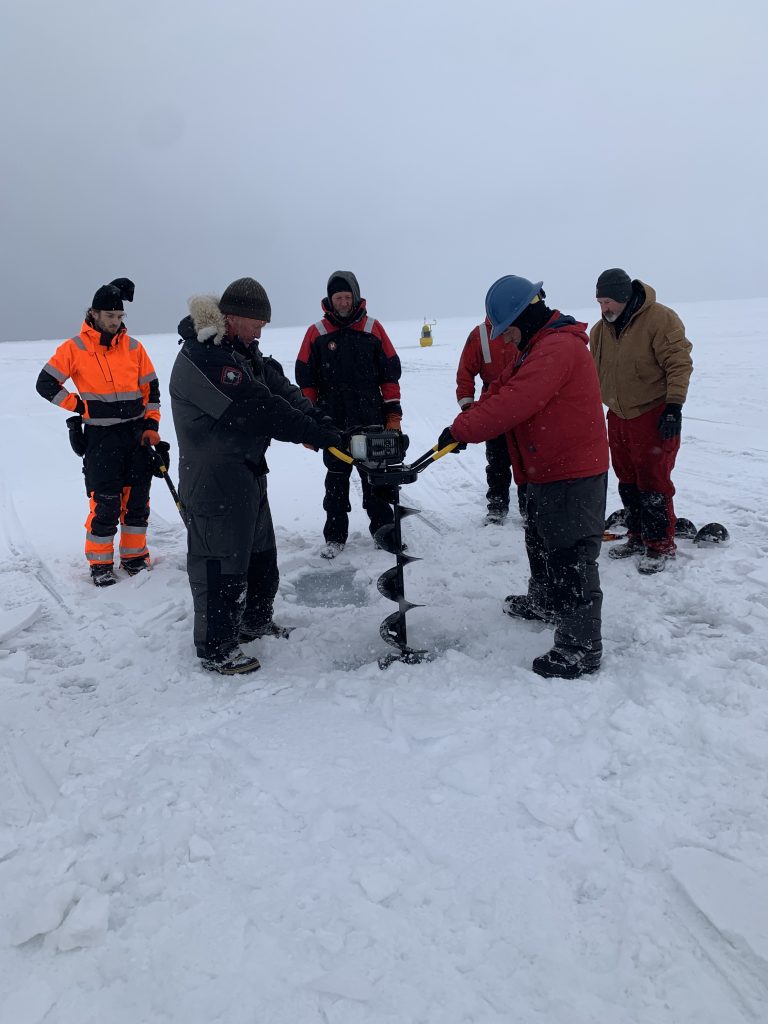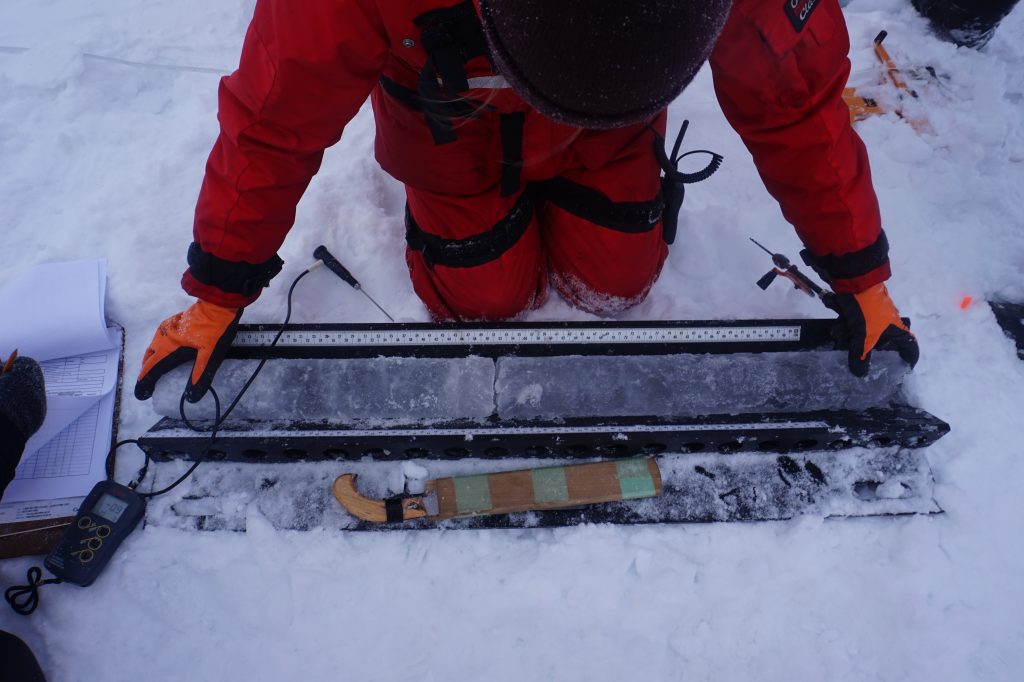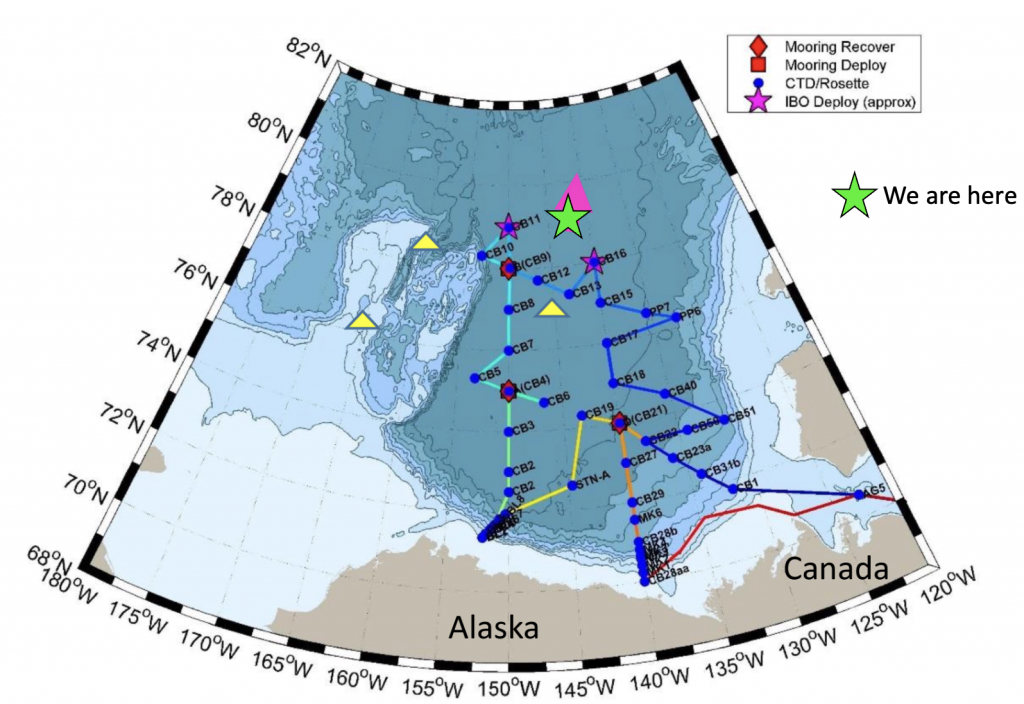Dispatch 9: Ice Station #1
Ashley Arroyo
September 23, 2023
Dispatch 9: Ice Station #1
Today we transited up to about 79°N searching for a suitable floe for our first Ice Based Observatory, IBO. The ice specialists on board had located one in the satellite images, and we needed to get a closer look. The floe was located at around 4 am, several kilometers across, and the Captain nestled the Louis in alongside a flat pan of ice around 1km across and about 0.5 to 3 meters thick. A couple members of the science team were lowered off the ship and onto the ice in a man-basket to test the ice floe to ensure that it was safe for the deployment of buoys. When deploying the buoys in ice, it is ideal that the ice thickness is generally uniform. However, given the extremely low ice conditions in the region this year, we were lucky to find this floe, so we couldn’t be too picky that it seemed to have lots of ridges, re-frozen melt ponds and false bottoms.
There were two different science groups doing work on the ice today: one group was deploying buoys while the other was collecting ice cores, water samples under the ice, and measuring ice thickness. The buoy group (led by Jeff O’Brien) deployed 4 buoys in total: an Ice-Tethered Profiler (ITP), a Tethered Ocean Profile (TOP), a Seasonal Ice Mass Balance buoy (SIMB), and an Arctic Ocean Flux Buoy (AOFB). Since these buoys are all deployed relatively near one another (about 50 meters apart) on the same ice floe, the idea is that they will drift together throughout the year and provide a cohesive data set of upper ocean measurements (including ice thickness, temperature, salinity, velocity measurements, and more). Although it was a long day of hard work, all four buoys were deployed successfully, and we’ve already heard from the ITP and TOP which are working as planned!
Another group of science members (led by Kazu Tateyama) was taking measurements of ice thickness and snow depth across a 200 meter transect. To measure the ice thickness (at intervals of 50 meters), the army of helpers in orange floater suits went to work drilling into the ice, removing ice cores, and measuring their lengths. Once the cores were extracted, the ice temperatures were measured, and the cores were packaged up and stored in freezers onboard for further analysis back home. At some point during all the ice work fun, co-chief scientist Paul Macoun brought out supplies for a picnic on the ice! We had sandwiches, cookies, and hot chocolate to keep us fueled for more ice work. At the end of the day, this crew collected 4 ice cores which had an average thickness of about 2 meters (although the thickness throughout the floe varied, likely due to ice floes colliding and forming ridges). All in all, everyone on the ice had a great time and the day was a success!
